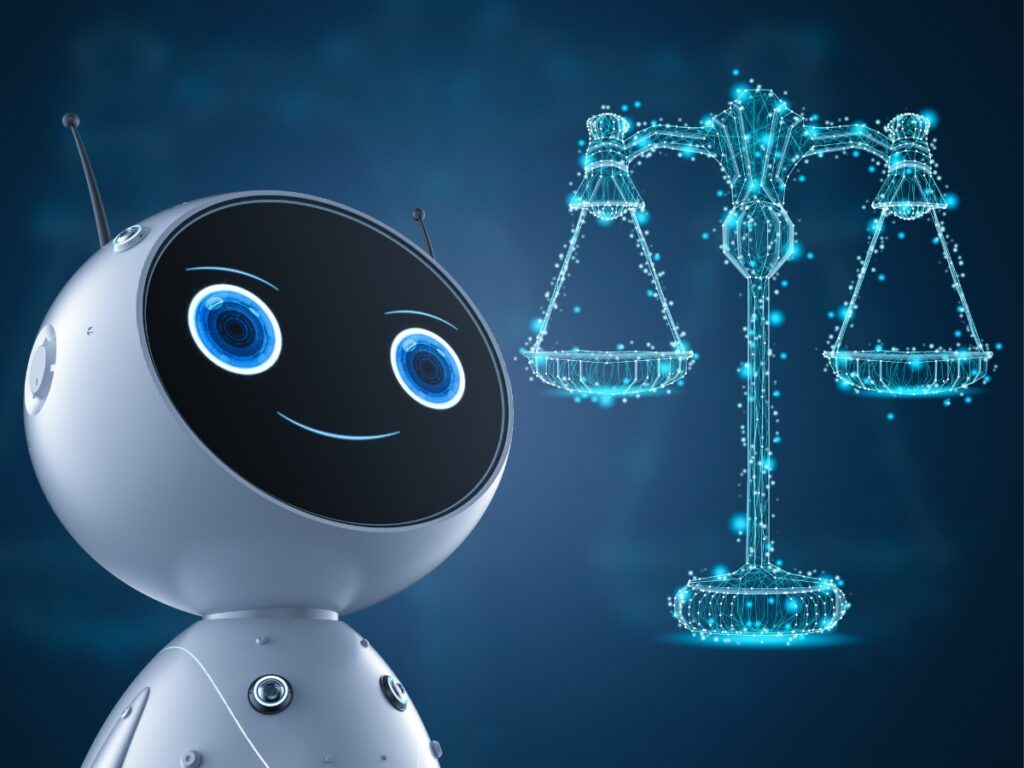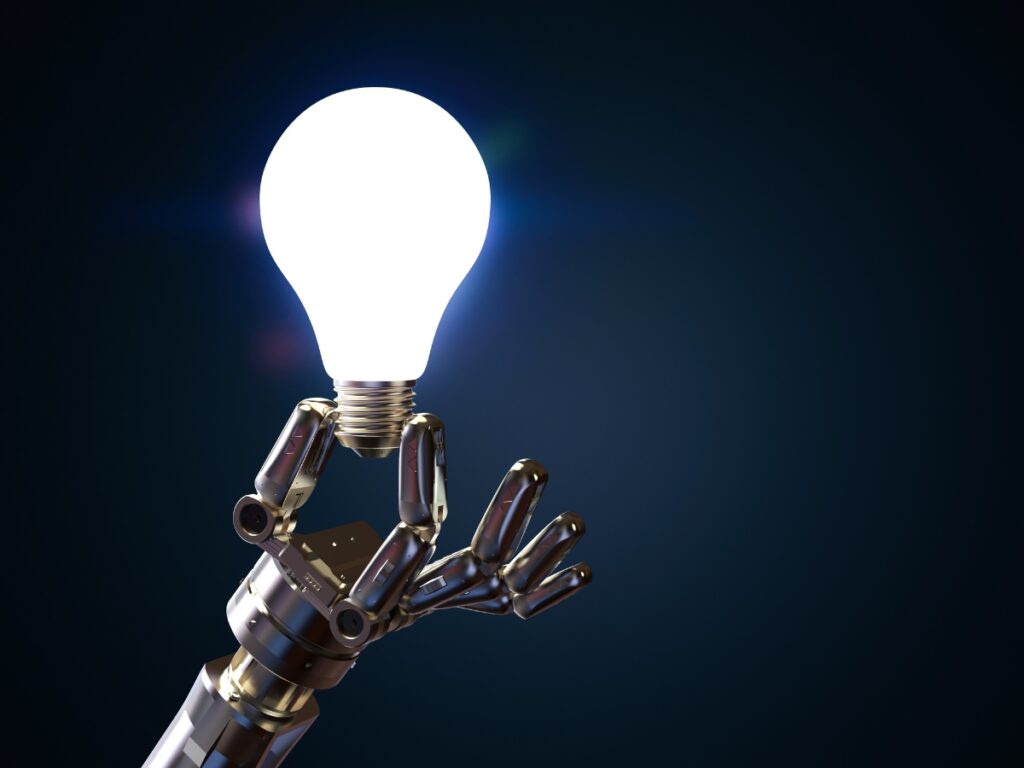This article comprehensively explores multilingual chatbots, underscoring their pivotal role in today’s global business scene. We’ll uncover their foundational principles, the avenues they open for businesses, and how they facilitate seamless cross-border digital interactions in an increasingly interconnected world.
Quick Snapshot – For the Brevity Seekers
- Multilingual chatbots act as linguistic bridges, allowing businesses to cater to a diverse, global audience without missing a beat. These digital ambassadors break down language barriers and reflect cultural sensitivity, ensuring meaningful and compelling user interactions. By integrating multilingual chatbots, businesses position themselves as genuinely global entities, quickly adapting to a world where borders are becoming more fluid.
- Incorporating multilingual chatbots is more than just a technological advancement; it’s a strategic move. As markets become increasingly globalized, these bots are indispensable tools for companies aiming to cast a wide net. By leveraging the power of multilingual chatbots, businesses can amplify their reach, foster deeper customer connections, and secure a competitive edge in international markets.
Welcome to the fourth Blue Lane Group article in the Best Chatbots for Customer Service: Blueprint for Success in 2023 series. These posts examine the essential chatbot topics of customer service automation, exploring how chatbots revolutionize interactions, enhance user satisfaction, and redefine the benchmarks for excellence in modern customer-centric businesses.

Disclosure: The digital products mentioned in this article are highly regarded in the marketplace and are endorsed by the Blue Lane Group staff. We may earn a commission at no additional cost if you purchase through the provided links.
Table of Contents

Introduction to Multilingual Chatbots
In our ever-evolving digital era, companies have continuously sought ways to bridge the communication gap with their global customer base. Enter multilingual chatbots: digital assistants fluent in numerous languages, enabling companies to break through linguistic barriers.
Platforms like Botsify and Tars have made it possible for businesses to operate on a global scale without linguistic limitations. Beyond merely translating text, these chatbots understand and interpret the nuances and intricacies of multiple languages, offering a seamless experience to users from different linguistic backgrounds.
The Power & Significance of Multilingual Chatbots
The global business landscape is shifting rapidly, and with this change comes the immense significance of multilingual chatbots.
These advanced tools offer companies a unique edge, granting them access to untapped markets worldwide. The ability to communicate without boundaries is revolutionized with platforms like Botpress and Rasa.
These solutions are about translating text and creating meaningful, personalized customer engagements worldwide. This level of engagement amplifies customer satisfaction and bolsters brand loyalty, making businesses truly global entities.

Definition & Evolution of Multilingual Chatbots
So, what exactly is a multilingual chatbot? It’s a digital interface built to engage with users in multiple languages, providing relevant and accurate responses. The journey of these chatbots, from their inception to their current state, is genuinely intriguing.
Initially, they were simple text interfaces, but today, with the advent of platforms like Dialogflow by Google, they’ve transformed into sophisticated entities.
These platforms harness advanced algorithms and vast datasets to ensure chatbots grasp the cultural context, local idioms, and even region-specific colloquialisms, providing users with incredible human interaction.
Harnessing Global Engagement and Reach
If businesses aim to extend their reach, capturing the global audience is paramount. Multilingual chatbots are the tools that make this possible. Leveraging platforms such as ManyChat and MobileMonkey, businesses can communicate without borders, ensuring they cater to diverse linguistic groups.
Engaging with consumers in their language doesn’t just boost brand visibility; it indicates a company’s commitment to its international clientele. Such gestures elevate brand perception and drive unparalleled customer loyalty, fostering growth in new regions and markets.

Transformative Benefits of Multilingual Chatbots
As globalization drives businesses to reach every corner of the world, the need to communicate efficiently and effectively across diverse linguistic landscapes becomes paramount. Multilingual chatbots have emerged as transformative tools in this regard.
These chatbots, empowered by cutting-edge technology and platforms, are not just bridging the language gap but are also reshaping the dynamics of customer engagement. They offer businesses a unique amalgamation of cost-efficiency, accessibility, and enhanced market penetration, making them indispensable in today’s digital age.
Enhanced Customer Experience & Loyalty with Botsify and MobileMonkey
In today’s hyper-competitive market, customer experience is the ultimate differentiator. Platforms like Botsify and MobileMonkey understand this nuance and have developed multilingual chatbots that offer personalized and relatable interactions.
These bots are designed to converse with users in their preferred language, making interactions natural and effortless. By ensuring customers feel heard, understood, and valued, these platforms enhance the immediate user experience and foster long-term loyalty, a crucial ingredient for sustained business growth.
Boosting Sales Potential & Global Outreach with ManyChat and Dialogflow
The global market is vast, with potential customers waiting to be tapped. ManyChat and Dialogflow are two platforms that recognize this potential. By offering advanced multilingual chatbots, businesses can boost their sales outreach exponentially.
These chatbots are not just language translators; they’re sales enablers. They understand the local nuances, cultural references, and buying behaviors, allowing businesses to pitch their products or services in the most relatable manner. Such a tailored approach invariably leads to higher conversion rates and expanded global footprints.

Behind the Scenes: How Multilingual Chatbots Operate
It’s intriguing to peel back the layers and explore the inner workings of multilingual chatbots. At their core, these chatbots leverage Natural Language Processing (NLP) and Machine Learning (ML) to understand and respond to user queries.
Platforms like Botpress and Rasa have advanced frameworks that allow these bots to discern the language and intent behind a user’s message. This deep understanding, combined with an extensive database of responses, ensures that these chatbots can converse in multiple languages while retaining the context and relevance of the conversation.
Botpress & Rasa: The Mechanics of Multilanguage Support
Diving into the mechanics of multilingual chatbot support, two names that stand out prominently are Botpress and Rasa. Botpress, an open-source platform, harnesses its modular design to integrate various language modules seamlessly.
This versatility means businesses can swiftly adapt to emerging markets, tailoring their chatbot’s linguistic capabilities as needed. On the other hand, Rasa elevates the multilanguage chatbot experience with its comprehensive natural language processing framework.
This framework can be intricately trained across various languages, ensuring precise and culturally relevant interactions. Both platforms exemplify how cutting-edge technology can be leveraged to build global chatbots.
IBM Watson Assistant: Language Nuances and Context Understanding
Diving deeper into multilingual chatbot technology, IBM Watson Assistant emerges as a paragon of linguistic sophistication. Beyond mere translation, Watson thrives on understanding the nuanced layers and cultural undertones embedded within languages.
It employs advanced NLP techniques backed by vast datasets to dissect and comprehend the essence of user interactions. This profound understanding ensures that every conversation retains contextual and emotional richness, irrespective of the language. At heart, IBM Watson Assistant isn’t just multilingual; it’s multicultural.

Challenges in Multilingual Chatbot Implementation
While the allure of multilingual chatbots is undeniable, their implementation comes with a unique set of challenges. The foundational challenge is, of course, ensuring linguistic accuracy. But the intricacies don’t end there.
Every language is imbued with its cultural essence, idioms, colloquialisms, and regional variations. A mere translation often fails to capture this richness, leading to stilted or erroneous interactions. Additionally, context is pivotal.
Words and phrases can dramatically shift meaning based on contextual use, demanding advanced algorithms and extensive training datasets to comprehend and respond aptly.
Addressing Language Inconsistencies with Tars
Language inconsistencies often emerge as a primary concern among the myriad challenges in multilingual chatbot design. Tars has recognized and directly addressed this challenge, offering a robust solution. Its platform is engineered to discern subtle linguistic variations, differing dialects, localized slang, or specific cultural expressions.
By refining its algorithms to be attuned to these nuances, Tars ensures that users from various regions, even within shared language groups, experience consistent, accurate, and relatable interactions with chatbots.
Balancing Translation Accuracy and User Expectations
One challenge stands tall in the rapidly evolving domain of multilingual chatbots: balancing translation accuracy with user expectations. Users desire fluid and natural conversations, not just technically accurate translations.
Meeting this demand requires chatbots to transcend basic translation and embrace proper language understanding, considering context, cultural nuances, and colloquialisms.
Ensuring a chatbot can resonate with a user’s emotional and contextual needs while maintaining linguistic precision is crucial. A delicate balance sets elite chatbot solutions apart from the generic ones.

Crafting a Multilingual Chatbot: A Step-by-Step Approach
Embarking on crafting a multilingual chatbot might seem daunting, but businesses can navigate this terrain effectively and systematically. The process starts with a clear identification of target audiences and languages.
This helps in curating suitable datasets for training and testing. Next comes the selection of the right chatbot platform, which offers robust multilingual support. Regular feedback loops are essential to capture real-time insights and ensure the chatbot evolves with the ever-changing linguistic landscapes.
Chatbot Design, Translation & Training Considerations
When delving into the specifics of chatbot creation, three pillars emerge as critical: design, translation, and training. Invention pertains to crafting a conversational flow that feels intuitive and user-centric.
Translation is not just about linguistic conversion but involves understanding a language’s cultural, contextual, and emotional undertones. Using professional, native translators can be beneficial here. Training is perhaps the most dynamic phase.
It involves feeding the chatbot vast amounts of data, refining its responses, and continuously updating its knowledge base to stay relevant and accurate.
Multilingual Chatbots Integration, Testing & Refinement
Once the chatbot has been designed and trained, integration becomes the next focal point. This involves embedding the chatbot into various platforms where users interact, whether websites, social media, or messaging apps.
Rigorous testing follows simulating real-world scenarios to gauge the bot’s effectiveness, accuracy, and adaptability. This phase often reveals areas of refinement, which are then iterated upon. The testing and improvement cycle continues, ensuring the chatbot remains a potent tool for global engagement.

Multilingual Chatbots and Websites: A Global Digital Symphony
In today’s interconnected digital world, businesses strive to provide an unparalleled user experience, often involving speaking the user’s language. Enter multilingual chatbots and websites, which harmoniously work together, creating a digital symphony.
While websites offer content in multiple languages to cater to global audiences, chatbots ensure real-time, interactive, and personalized communication. This powerful combination promises language translation and a genuinely international and enriched user experience.

Top 8 Leading Multilingual Chatbot Solutions Summarized
- Botsify: A chatbot platform known for its multilingual support and seamless integration with various messaging platforms.
- Botpress: An open-source platform with a modular design offering robust multilingual capabilities.
- Dialogflow (by Google): Renowned for its natural language processing, it extends multilingual support across many languages.
- IBM Watson Assistant: A solution beyond mere translation, capturing the nuances of different dialects.
- ManyChat: A platform famed for its Messenger bots, offering extensive multilingual support to cater to a global clientele.
- MobileMonkey: An omnichannel chatbot platform designed to function across numerous languages effortlessly.
- Rasa: An open-source powerhouse lauded for its strong NLP and extensive language support.
- Tars: Tailored chatbots capable of communicating efficiently across various languages.
FAQ on Multilingual Chatbots
Frequently Asked Questions (FAQs) are a quick reference point addressing users’ common queries and concerns about multilingual chatbots. Whether it’s understanding their fundamental operation, the intricacies of their design, or their integration with various platforms, FAQs encapsulate these details succinctly. They testify to chatbot technology’s evolving and intricate nature, providing clarity and fostering user trust.

The Advantage of Multilanguage Support in Chatbots
The benefits of multilanguage support in chatbots extend far beyond mere translation. At its core, this feature fosters inclusivity, allowing businesses to cater to a diverse audience base. Users feel valued when communicating in their native language, leading to increased engagement, trust, and brand loyalty.
Furthermore, multilanguage support positions a brand as globally aware and adaptable, essential traits in today’s competitive market.
Best Practices for Implementing Multilingual Chatbots
Successfully implementing a multilingual chatbot requires a blend of technology and strategy. Here are some best practices to consider:
- Start with Core Languages: Prioritize the languages most relevant to your target audience.
- Engage Native Speakers: They can provide insights into cultural nuances and linguistic intricacies.
- Continuous Learning: Regularly update and train your chatbot based on user interactions to improve accuracy and relevance.
- Context Matters: Ensure your chatbot understands context to avoid mistranslations.
- User-Centric Design: The chatbot’s interface and experience should be intuitive, regardless of the language chosen.
These practices will ensure a smooth and effective roll-out of your multilingual chatbot, enhancing user satisfaction and global reach.
How to Choose the Right Multilingual Chatbot Platform?
Selecting the right platform for a multilingual chatbot is paramount to its success. The ideal venue is not just about translation capabilities but encompasses several other factors:
- Scope of Language Support: The platform should cater to the primary languages of your target audience. For instance, Dialogflow supports numerous languages, making it a versatile choice for diverse audiences.
- Ease of Integration: Check how seamlessly the chatbot can integrate with your existing systems and platforms.
- Natural Language Processing (NLP) Capabilities: Platforms like IBM Watson Assistant excel in understanding language nuances, ensuring more human-like interactions.
- Scalability: As your business grows, your chatbot should adapt. Platforms like Botpress offer modular designs that fit your needs.
- Feedback and Learning Mechanism: The chatbot must learn from user interactions to improve over time.
- Affordability: While investing in a good platform is crucial, ensure it fits within your budgetary constraints without compromising on essential features.
By weighing these factors and assessing individual platform strengths, such as ManyChat for Messenger bots or Rasa for robust NLP, businesses can make an informed decision tailored to their specific needs.

Conclusion: The Future of Global Business with Multilingual Chatbots
The digital age continues to erase geographical boundaries, making businesses genuinely global. Multilingual chatbots stand at this frontier, bridging language gaps and forging stronger connections with audiences worldwide.
Their ability to provide real-time, personalized interactions in multiple languages has revolutionized customer engagement. As technology advances and the world becomes even more interconnected, multilingual chatbots will play a pivotal role. They represent more than just a tool; they symbolize the future of global business, where every customer, irrespective of language or location, feels valued and understood.

You Might Also Like
If you enjoyed this article and received value from it, check out the other Blue Lane Group articles in the Best Chatbots for Customer Service: Blueprint for Success in 2023 series:
- Chatbot ROI: Unlock Unmatched Profits with Top 5 Strategies for Optimization
- Omnichannel Chatbots: Unlock Consistent Engagement with 7 Best Practices
- Chatbot KPIs: 10 Essential Metrics to Drive Optimal Results
- Multilingual Chatbots: Break Language Barriers with 8 Leading Solutions
- Enterprise AI Chatbot Solutions: 7 Key Tools to Supercharge Your Business
- Mastering Chatbot Training: 7 Strategies for Optimal User Engagement
- Chatbot APIs: 6 Leading Options for Seamless Functionality
- Chatbot Scripts: 9 Proven Strategies to Boost Conversions and Engagement
- Rule-Based Chatbots: Drive Consistent Responses with Top 9 Benefits
- Chatbot Success Metrics: Unlock Optimal Performance with Top 10 Insights
- Chatbot Analytics: Drive Excellence with 10 Essential Tools
- Mastering Interactivity: Top 10 Chatbot Frameworks Explored
- Chatbots in Retail: 7 Winning Strategies for Elevated Customer Engagement
- Chatbots for Lead Generation: 6 Best Practices to Transform Your Funnel
- Chatbot Integrations: 6 Essentials for Enhanced Productivity and Operations
- Chatbot UX: Enhance Engagement with These 8 Vital Principles
- Chatbot Security: 7 Essentials to Safeguard Your Business
- Chatbot Development Services: 7 Must-Knows to Boost Your ROI
- Chatbots in Healthcare: 6 Leading Innovations Revolutionizing Patient Care
- NLP for Chatbots: Top 6 Techniques Transforming Chat Experiences
- Benefits of Chatbots in Customer Service: 7 Key Sales Boosters
- 7 Essential Social Media Chatbots for Unmatched Engagement
- Building Chatbots Powered by AI: 5 Proven Techniques for Epic Profits





